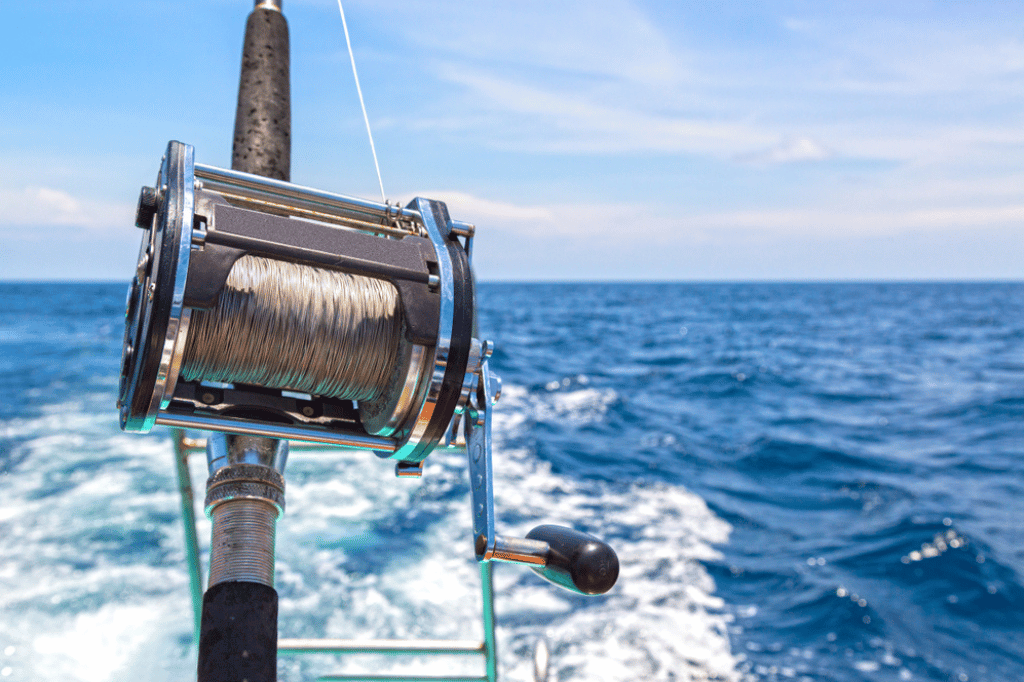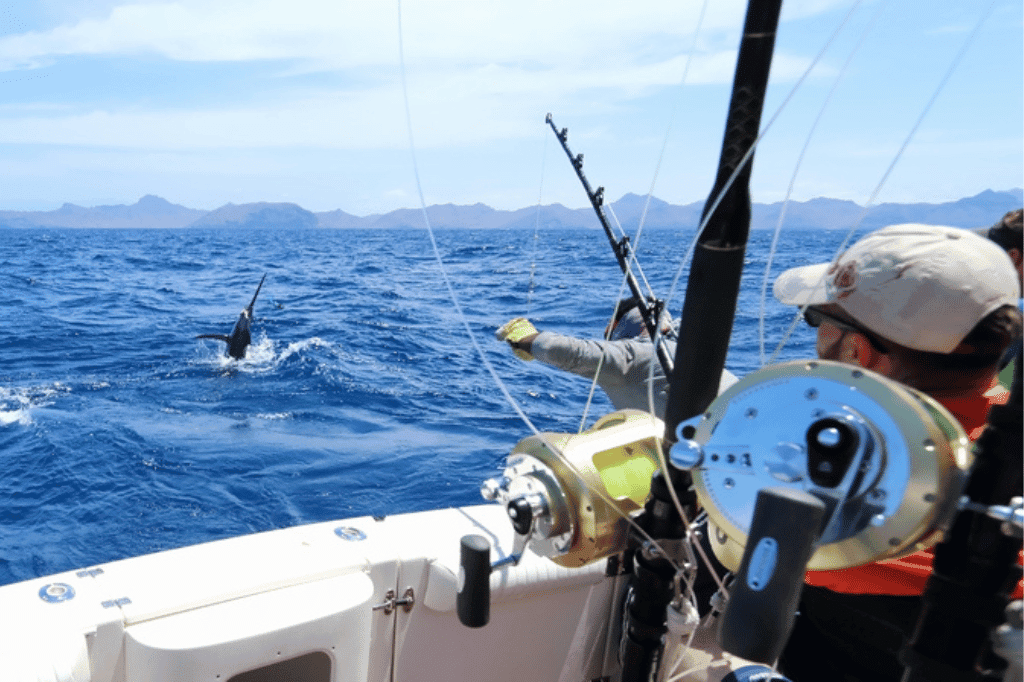Embarking on a tropical fishing adventure presents an opportunity to tangle with some of the most sought-after game fish in the world. The warm, clear waters found near the equator teem with a rich variety of fish species, making every trip both a challenge and a delight for fishing enthusiasts.
From the vibrant coral reefs to the deep sea drop-offs, the habitats are as diverse as the fish that inhabit them. Anglers can expect not only thrilling battles with powerful fish but also the serene beauty of untouched natural surroundings. Selecting the right gear, understanding local regulations and conservation efforts, and knowing the peak seasons for target species are essential for a successful and eco-friendly fishing tropical experience. With proper planning, tropical fishing can be an unforgettable highlight for both novice and experienced fishermen alike.

Fishing Tropical Waters: Angling for Exotic Thrills By Insiderfish.com
Tropical Treasures: The Lure Of Exotic Fishing
Species Spotlight: Target Fish In Tropical Waters
Tropical waters are alive with an abundance of fish species, each more spectacular than the last. Anglers might reel in a powerful GT (Giant Trevally) or a sleek and stunning Sailfish.- Bonefish – Known for their elusive nature
- Mahi Mahi – Recognized by their vibrant colors
- Tarpon – Revered for their impressive leaps
Regional Hotspots: Where To Cast Your Line
Every fishing tropical destination has its own charm. From the warm currents of the Caribbean to the secluded beaches of the South Pacific, each location promises a unique experience.| Location | Key Species | Best Season |
|---|---|---|
| Great Barrier Reef, Australia | Black Marlin, Coral Trout | September to December |
| Florida Keys, USA | Permit, Snook | All Year Round |
| Andaman Islands, India | Yellowfin Tuna, Barracuda | October to May |

Gear Up: Essential Tackle For Tropical Angling
Rod And Reel Recommendations
Choosing a rod and reel combo is crucial for tropical fishing success. Consider strength, flexibility, and weight. You need gear that can handle the fight from powerful species like marlin or tarpon. Here are top picks:- Spinning Reels and Rods: Great for beginners, easy to use.
- Baitcasting Reels: Offers precision, ideal for experienced anglers.
- Heavy-duty Trolling Reels: Best for big game fish.
| Type | Reel | Rod |
|---|---|---|
| Spinning | Shimano Stella | Ugly Stik Elite |
| Baitcasting | Daiwa Catalina | St. Croix Legend |
| Trolling | Penn International | Tsunami Trophy |
Lures And Baits: Matching The Hatch In The Tropics
Using the right lure or bait is like speaking the language of the fish. In the tropics, ‘match the hatch’ means offering prey look-alikes that tropical species can’t resist. Here are the top choices to fool even the cleverest fish:- Surface Poppers: Imitate injured baitfish, provoke exciting strikes.
- Jigs: Versatile, effective for a multitude of species.
- Soft Plastics: Mimic the movement and appearance of small fish and crustaceans.
Techniques And Tactics: Mastering The Approach
Casting Strategies For Clear Water
Tropical waters famously clear, demand stealth and precision. Here’s an overview:- Use Light Line: Opt for a thinner, less visible line to avoid spooking fish.
- Longer Casts: Distance yourself from the target to prevent shadows or noise.
- Fluorocarbon Leaders: Virtually invisible, they trick the wariest of fish.
- Soft Lures: Minimize splash with gentle, silent lure entry.
Boat Positioning And Drift Fishing Secrets
Strategic boat positioning can make or break your game. Below are tried-and-true tips:- Anchor Downwind: Let the breeze position your craft for a natural approach.
- Drift Speed: Use a drift sock to slow your boat, mimicking natural water movement.
- Silent Approach: Turn off the motor early and drift into the fishing zone quietly.
- Watch for Currents: Align your drift with the current for a seamless presentation.
Weather And Water Conditions: Best Times To Fish
Understanding Seasonal Patterns
Fish behavior changes with the seasons. Here’s what to expect:- Summer brings peak activity with warmer waters.
- In fall, fish migrate, sparking exciting bites.
- Winter slows metabolism, so seek deeper waters.
- Spring triggers spawning, making inshore areas hot spots.
Reading The Tides For Optimal Bites
High and low tides shape fishing success in the tropics. Understanding tidal movements can improve your catch rate.| Tide Type | When to Fish | Why |
|---|---|---|
| High Tide | 2 hours before and after | Fish move in to feed |
| Low Tide | 2 hours after and before | Trapped baitfish attract predators |
Conservation And Ethics: Sustainable Fishing Practices
Catch And Release: Doing It Right
Responsible catch and release methods ensure fish populations thrive. Follow these steps:- Use appropriate gear: Opt for circle hooks and non-toxic lures.
- Handle with care: Wet your hands before touching the fish to protect their slime coat.
- Quick release: Minimize the time the fish is out of water.
- Revive if necessary: Gently move the fish back and forth in the water to encourage gill movement.
Local Regulations And Protected Species Awareness
Staying informed is key to conservation efforts. Adhere to these guidelines:- Know the rules: Familiarize yourself with local fishing regulations.
- Identify protected species: Learn which species are off-limits.
- Report violations: Inform authorities if you witness illegal fishing activities.
Adventure Awaits: Guided Tours Vs Solo Expeditions
Choosing A Reliable Fishing Guide
Selecting an expert guide is essential for the best experience.- Search for licensed professionals with glowing recommendations.
- Seek guides who provide safety gear and top-notch equipment.
- Consider those with local knowledge of the best fishing spots.
Preparation Tips For The Independent Angler
Boldly fishing alone? Proper preparation is key.- Study local regulations and weather patterns thoroughly.
- Equip yourself with the right gear and ample supplies.
- Inform someone of your itinerary and expected return time.
| Guided Tour | Solo Expedition |
|---|---|
| Expert local insights | Complete freedom |
| Equipment provided | Self-reliance skills needed |
| Increased safety | Bold, personal adventure |
Saltwater Savvy: Staying Safe On Tropical Waters
Personal Safety Gear Checklist
Your gear is your lifeline. Ensure every item on this checklist is on board:- Life Jacket: One per member, fitting snugly.
- Sun Protection: Sunscreen, a wide-brimmed hat, and UV-blocking sunglasses.
- Waterproof Clothing: Quick-dry attire for unexpected splashes.
- First Aid Kit: Basic medical supplies in case of minor injuries.
- Hydration: Plenty of water to prevent dehydration.
Navigating Potential Hazards At Sea
Knowing risks makes for a safer voyage. Keep these tips in mind:- Weather Watch: Check forecasts regularly.
- Sea Life Awareness: Recognize local marine life to avoid dangerous encounters.
- Equipment Check: Inspect your boat and tackle before every trip.
- Communication Plan: Maintain contact with the shore or other vessels.

From Sea To Table: Preparing Your Catch
Cleaning And Filleting: A Step-by-step Guide
First things first, let’s clean and fillet your fish. This ensures the meat is tasty and safe to eat. Our guide makes it simple. Here are the tools you’ll need and the steps to follow.- Fillet knife: A sharp tool for precise cuts.
- Scaling tool or butter knife: To remove scales.
- Cutting board: Choose one with good grip.
- Wash the fish in cold water.
- Use your scaling tool to scrape off the scales.
- Make a cut behind the gills and towards the head to remove it.
- Slit the belly gently and take out the insides.
- Rinse the fish body again.
- Place the fish on its side. Cut from the tail, sliding the knife along the spine.
- Repeat on the other side.
- Trim any excess bones.
Local Recipes: Cooking Your Tropical Prize
Ready for some cooking magic? Turn your catch into mouth-watering dishes. We’ve compiled local recipes that bring out the best in your tropical fish.| Recipe Name | Ingredients | Instructions |
|---|---|---|
| Grilled Citrus Fish | Lemon, herbs, olive oil | Marinate, grill for 10 minutes |
| Spicy Fish Tacos | Cayenne, avocado, tortillas | Season, cook, assemble tacos |
| Tropical Fish Curry | Coconut milk, curry powder | Simmer fish in curry sauce |
Frequently Asked Questions For Fishing Tropical
What Is Fishing Tropical?
Tropical fishing refers to angling in the warm waters of tropical regions. It often targets species like marlin, tuna, and mahi-mahi, providing a different experience compared to temperate fishing due to the variety of fish and techniques used.
What Gear Is Needed For Fishing Tropical?
Essential gear for tropical fishing includes a heavy-duty rod, high-capacity reel, strong fishing line, and a selection of lures or baits designed for tropical species. Sun protection and a sturdy boat are also key for a safe and successful trip.
When Is The Best Time For Fishing Tropical?
The best time for tropical fishing generally depends on the specific location and target species. However, many tropical regions have peak seasons where conditions are ideal, often outside of the rainy season and when water temperatures are favorable.
How To Prepare For A Tropical Fishing Trip?
To prepare for a tropical fishing trip, research the target species and their habits, pack appropriate gear and protective clothing, and ensure familiarity with local regulations. It’s also important to acclimate to the weather and stay hydrated.
Conclusion
Exploring tropical fishing offers adventures that resonate with both novices and seasoned anglers. We’ve touched upon the thrill of casting lines in exotic waters. Embrace these experiences for remarkable catches and memories. Ready your tackle; the world of tropical fishing awaits.
Tight lines and tranquil seas to all!






